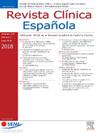视网膜血管闭塞患者的耳纤颤:荟萃分析
IF 1.7
4区 医学
Q2 MEDICINE, GENERAL & INTERNAL
引用次数: 0
摘要
背景心房颤动(AF)与视网膜血管闭塞之间的关系报道不一致。因此,我们进行了一项系统回顾和荟萃分析,以评估有或没有视网膜血管闭塞的个体发生房颤的情况。方法对PubMed数据库从建立到2023年11月发表的相关研究进行全面检索。为报道视网膜血管闭塞患者发生房颤的研究设定了纳入标准。集合效应大小由I2统计量决定,使用固定效应或随机效应模型。结果我们的荟萃分析包括12项研究。在荟萃分析中,5项研究(9,418例视网膜动脉闭塞[RAO]患者和26,116,452例对照)显示,RAO患者AF患病率显著高于其他患者(优势比[OR] = 1.74, 95%可信区间[CI] 1.15-2.63, P = 0.009, I2 = 94%)。四项研究(1,622例视网膜静脉闭塞[RVO]患者和92,910例对照)表明,RVO患者房颤患病率较高(OR = 2.28, 95% CI 1.93-2.69, P <;0.00001, i2 = 0%)。随访发生率方面,两项研究(806例RAO患者和7840例对照)报告RAO患者AF检出率较高(风险比[HR] = 1.60, 95% CI 1.25-2.04, P = 0.0002, I2 = 0%)。同样,两项研究(2,330名RVO患者和8,641名RVO对照)显示,RVO患者的房颤检出率更高(HR = 1.25, 95% CI 1.04-1.51, P = 0.02, I2 = 49%)。结论本研究的证据表明,视网膜血管闭塞患者AF的患病率和发病率显著升高,这表明两者之间的潜在关联值得进一步研究。本文章由计算机程序翻译,如有差异,请以英文原文为准。
La fibrilación auricular en pacientes con oclusiones vasculares retinianas: un metaanálisis
Background
The relationship between atrial fibrillation (AF) and retinal vascular occlusions has been inconsistently reported. Therefore, we conducted a systematic review and meta-analysis to evaluate the occurrence of AF in individuals with and without retinal vascular occlusions.
Methods
A thorough search of the PubMed database was conducted for relevant studies published from its inception through November 2023. Inclusion criteria were set for studies that reported on AF occurrence in patients with retinal vascular occlusions. The pooled effect sizes were determined using either a fixed-effects or random-effects model, as dictated by the I2 statistic.
Results
Our meta-analysis included 12 studies. In the meta-analysis, five studies (9,418 retinal artery occlusion [RAO] patients and 26,116,452 controls) showed a significantly higher prevalence of AF in RAO patients (odds ratio [OR] = 1.74, 95% confidence interval [CI] 1.15–2.63, P = 0.009, I2 = 94%). Four studies (1,622 retinal vein occlusion [RVO] patients and 92,910 controls) indicated a higher prevalence of AF in RVO patients (OR = 2.28, 95% CI 1.93–2.69, P < 0.00001, I2 = 0%). For follow-up incidence, two studies (806 RAO patients and 7,840 controls) reported a higher rate of AF detection in RAO patients (hazard ratios [HR] = 1.60, 95% CI 1.25–2.04, P = 0.0002, I2 = 0%). Similarly, two studies (2,330 RVO patients and 8,641 RVO controls) revealed a higher rate of AF detection in RVO patients (HR = 1.25, 95% CI 1.04–1.51, P = 0.02, I2 = 49%).
Conclusions
Our evidence from this study suggests a significantly elevated prevalence and incidence of AF in patients with retinal vascular occlusions, indicating a potential association that warrants further investigation.
求助全文
通过发布文献求助,成功后即可免费获取论文全文。
去求助
来源期刊

Revista clinica espanola
医学-医学:内科
CiteScore
4.40
自引率
6.90%
发文量
73
审稿时长
28 days
期刊介绍:
Revista Clínica Española published its first issue in 1940 and is the body of expression of the Spanish Society of Internal Medicine (SEMI).
The journal fully endorses the goals of updating knowledge and facilitating the acquisition of key developments in internal medicine applied to clinical practice. Revista Clínica Española is subject to a thorough double blind review of the received articles written in Spanish or English. Nine issues are published each year, including mostly originals, reviews and consensus documents.
 求助内容:
求助内容: 应助结果提醒方式:
应助结果提醒方式:


